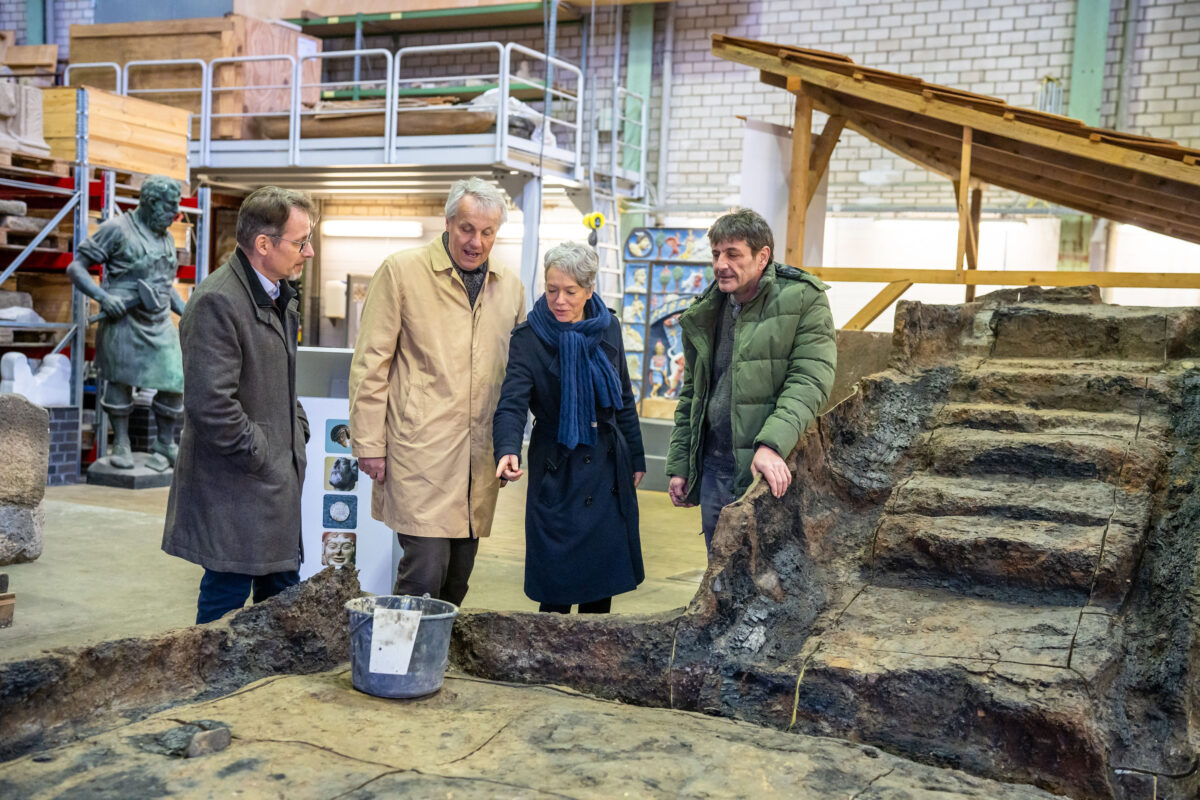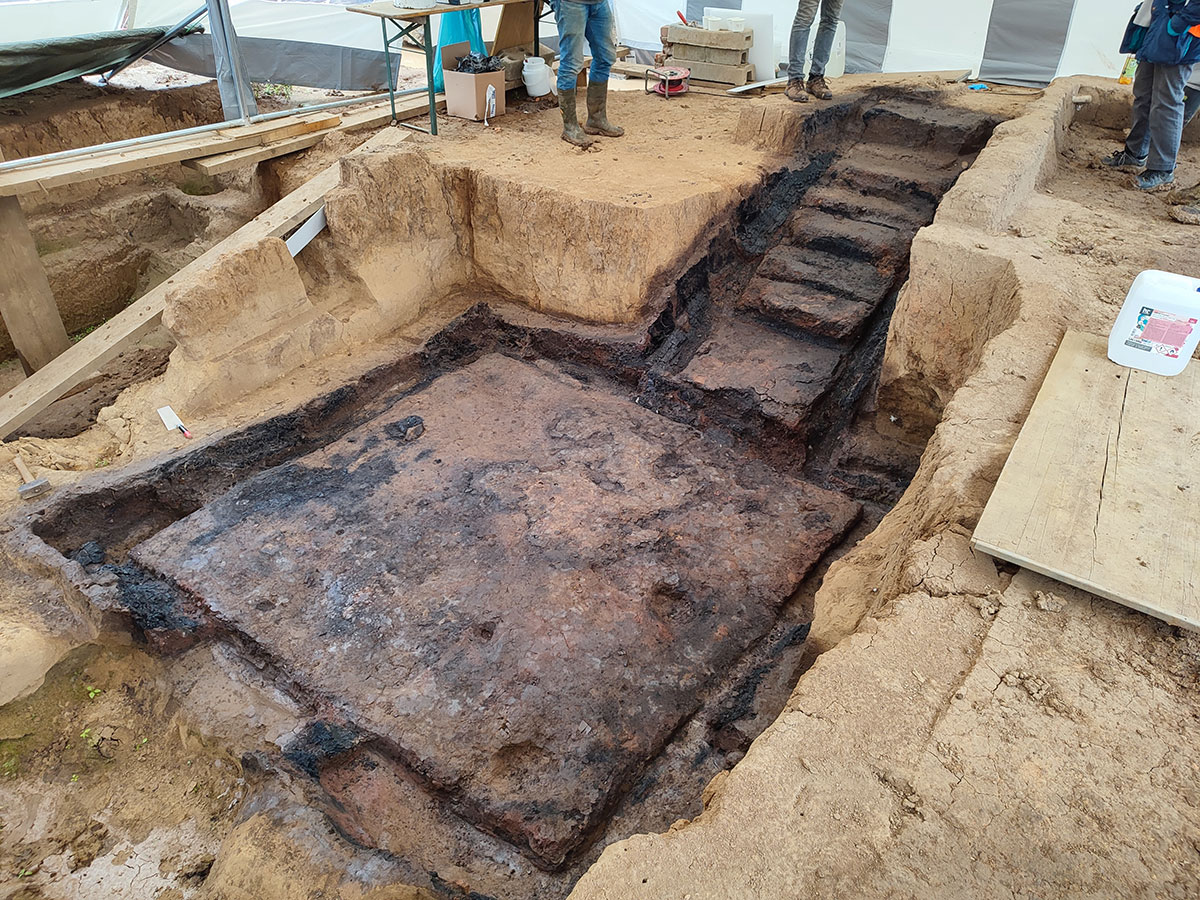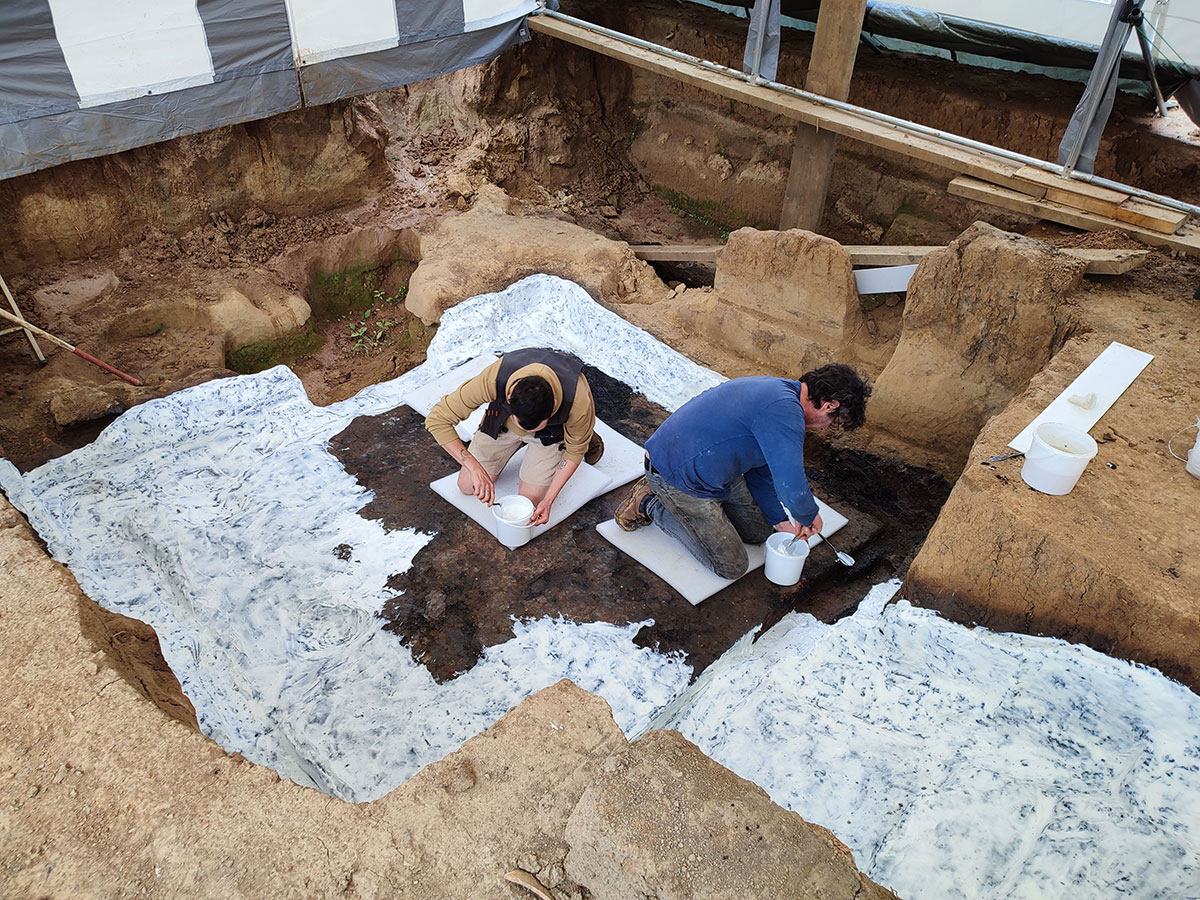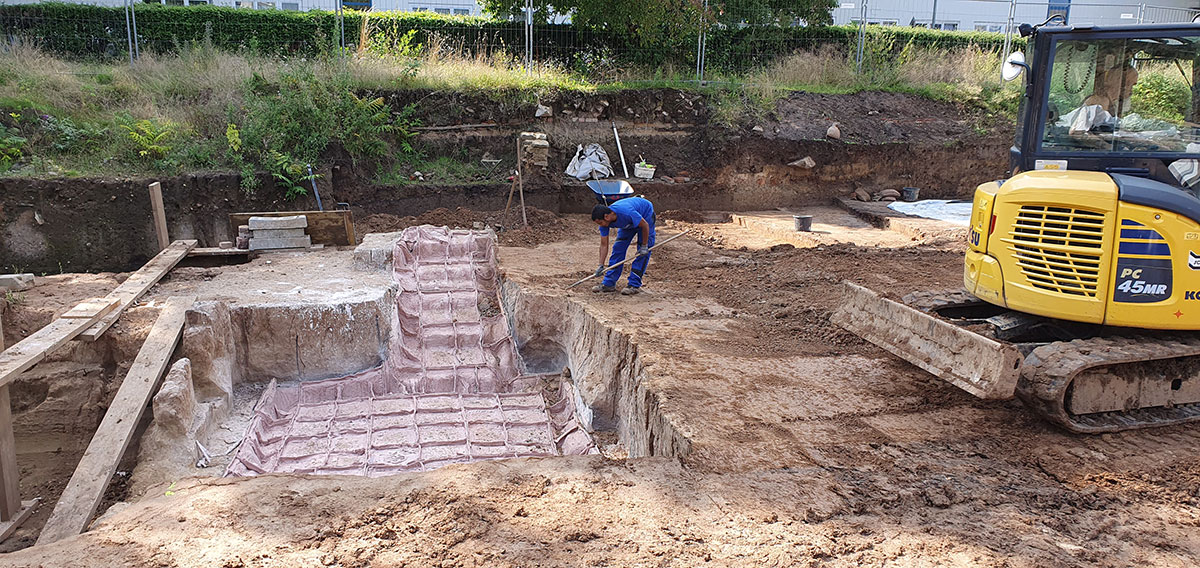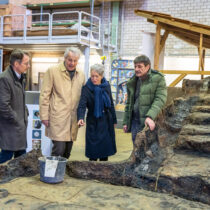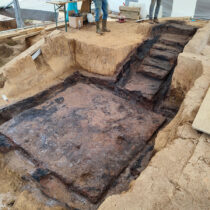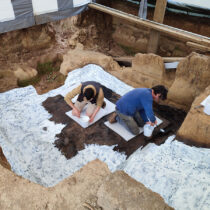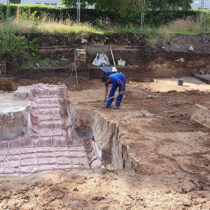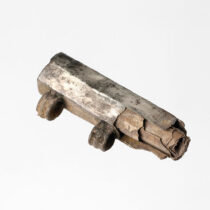The exceptionally well-preserved wooden cellar from the Roman Nida was in the past months, completely recovered and conserved by restorers at the Frankfurt Archaeological Museum. It was uncovered during an excavation by the heritage office of the city of Frankfurt am Main in Heddernheim, March 2023.
The wooden cellar was a part of a Roman residential house, which was built on the southern side of the two main streets (platea praetoria) in the ancient city of Nida during the late first century A.D. No remains of the building, a half-timbered house were left. The evaluation of the findings and their materials is of great scientific interest; its good conditions moreover offer an almost unique opportunity to gain insight of life in Nida and to tell the stories of the city and its inhabitants in an organized public presentation.
The Roman site of Nida in Frankfurt-Heddernheim, the administrative centre of the Civitas Taunensium, has been known since the 19th century. It is one of the most important archaeological sites in thecity area and within the Roman province of Germania Superior (Upper Germania).
‘‘Such an extraordinary find demands special attention. Due to the weather conditions, there was immediate danger and we decided to save the cellar and hence an important artifact of ancient Frankfurt at short notice. We are pleased that despite technical effort and new methods, we were able to achieve this. During the next few weeks, the cellar will continue to be researched while a suitable presentation is created‘‘, Dr. Ina Hartwig, Head of Frankfurt’s Department of Culture states.
Statement by Dr. Thomas Wolfgang David: ‘‘From the perspective of the Archaeological Museum, it is amazing that, thanks to the quick decisions of the Department of Culture and Science, the funds required at such short notice were made available for the expensive recovery of the significantly sensitive remains of the cellar damaged by fire. Every additional day in the open air would have resulted in a loss of its originality. The quick action created an almost optimal foundation for the upcoming public presentation of this extraordinary archaeological find, which is currently being conserved in a special workshop.
The entrance to the cellar faced the south of the main street; the burnt steps of the cellar staircase are still evidently visible. Throughout the cellar, the remains of charred beams, charcoal and fire debris bear witness to the damaging fire that once completely destroyed the house during ancient times. Some of the finds show the effects of the fire, such as a glass jar melted by the strong heat and iron utensils still lying on the cellar stairs. This shows that the residents clearly did not have time to save all the movable objects from the cellar. Some time after the fire, the property was rebuilt upon, however the cellar was no longer used.
To determine the exact date of the construction and destruction, the finds from the excavation must first be evaluated. The processing of the material promises to be exciting, also including the remains of the ceramic and glass vessels, as well as some unusual objects made of metal. These have already been passed over for conservation to the Frankfurt Archaeological Museum.
The cellar is not the first wooden cellar with fire debris that has been identified from the Roman Nida. Similar finds were discovered during excavations in the ancient city numerous times over the past 100 years; yet were usually less well preserved and had not been examined as extensively with modern excavation methods. The cellar uncovered in 2023 is hence in many aspects, special.
The 15-step recovery of the Roman cellar in 15 steps:
1. The consolidation of the 25 m² surface material with synthetic resins
2. The application of a separating layer of silicone rubber
3. The application of a capsule layer of gypsum laminates
4. The milling of separating cuts, to make the 33 floor segments manageable
5. The attachment of stiffening bars to reinforce the gypsum capsules
6. The removal of the segments from the ground
7. The transportation of the material to Winterbach
8. Cleaning the bottom of unconsolidated soil layers
9. The consolidation of the layers from the bottom
10. The bonding of the bottom of the material with glass fiber laminates
11. The demolding of the protective capsules
12. The processing of the edges
13. The production of the 33 bases from aluminum profiles
14. The height adjustment of the segments
15. The coloring of minor defects and joints
